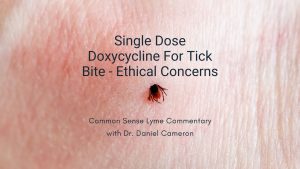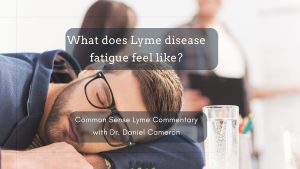Call for your appointment today 914-666-4665 | Mt. Kisco, New York

According to the CDC, in 2016, nearly 38% of all Lyme disease cases occurred in Pennsylvania. Other studies report “ticks infected with B. burgdorferi are now detectable in every county in Pennsylvania, with infection rates similar to that of endemic Northeastern states.”
Now, a new study examines the impact of Lyme disease among children living in western Pennsylvania over a 10-year period. The authors hoped to better understand the clinical characteristics of pediatric Lyme as they changed over the study period.
“In clinical practice, we observed an increase in the number of patients diagnosed with Lyme disease at Children’s Hospital of Pittsburgh (CHP) of the University of Pittsburgh Medical Center (UPMC), which prompted our investigation…,” states Eddens and colleagues. [1]
The authors reviewed the records of 773 children diagnosed with Lyme disease between 2003 and 2013 at Children’s Hospital of Pittsburgh, specifically assessing clinical presentation, healthcare utilization patterns and geographic locations.
They found that over a 10-year period, Lyme disease cases “increased exponentially, with the highest burden of infection shifting from rural to non-rural areas…”
In addition, “an exponential increase in Lyme disease occurred in the pediatric population of western Pennsylvania,” writes Eddens from the Medical Scientist Training Program at University of Pittsburgh and Carnegie Mellon University.
[bctt tweet=”Study finds ‘exponential’ increase in Lyme disease cases among children living in western Pennsylvania.” username=”DrDanielCameron”]
In fact, the actual number of pediatric cases may be much greater. “Most, but not all, children in western PA are included in our integrated EMR, so our results likely under-represent the true case numbers of pediatric Lyme disease.”
What did the study find?
- The average age of all the participants was 8.1 years;
- 22% of children were between 0 and 4 years of age;
- 45% of children were between 5 and 9 years old;
- The majority were males (59%);
- 29% had a history of a tick bite;
- 62% of the cases were diagnosed between May and August.
What were common signs and symptoms?
- 56% of children had an erythema migrans rash;
- 47% had joint pain;
- 45% had a fever;
- 30% reported a headache and fatigue;
- 31% reported joint swelling;
- 22% had difficulty walking.
Neurologic symptoms were less common, according to the study’s findings.
- 12% presented with cranial nerve palsy;
- 11% complained of neck stiffness.
What was the treatment for most children?
- Most children were prescribed either doxycycline (47%) or amoxicillin (44%).
“Outpatient intravenous antibiotics were used to treat 15 cases of Lyme meningitis and one case of Lyme arthritis,” writes Eddens.
- The children were treated by a variety of specialists. Rheumatologists identified the first 5 children. Over the years, Infectious Disease specialists, along with clinicians from Orthopedic Surgery, Neurology, and Cardiology became involved in providing care.
“In the latter years of the epidemic, as the burden of Lyme disease reached its highest in the study period, most cases were diagnosed at ED [emergency departments] and PCP [primary care pediatricians] sites,” writes Eddens.
Where did most children with Lyme disease live?
The rising numbers of children with Lyme disease was substantial. “There was an exponential increase in the number of cases of pediatric Lyme disease over the study period, with a calculated doubling time of 1.6 years,” writes Eddens and colleagues.
The number of children with Lyme disease living in non-rural areas was substantial with 503 children residing in non-rural zip codes. 169 children were living in the city of Pittsburgh.
The growth in numbers of cases is not unique to western Pennsylvania.
“Specifically, several areas that were once Lyme-naïve, including Ohio, Illinois, North Dakota, and Iowa, now have an increasing B. burgdorferi-infected tick population and are at-risk for expansion of Lyme disease cases, similar to how Pennsylvania was at the time of this study,” the authors explain.
References:
- Eddens T, Kaplan DJ, Anderson AJM, Nowalk AJ, Campfield BT. Insights from the Geographic Spread of the Lyme Disease Epidemic. Clin Infect Dis. 2018.




My six-year-old son is a “statistic” in this study. Here in a suburb of Pittsburgh the general population is largely unaware of how high-risk our region has become. There is very little public awareness effort being generated from anywhere including the major health institution the doctors who authored the study are employed by (UPMC). No public awareness media campaigns, no awareness and prevention education at schools, very little coming from county government, just information on their website. The local news coverage of this study was minimal. It should have been headline news in this region. It is getting more attention in the Lyme community but we’re the ones who already know Lyme is a huge, growing problem. Thank you Dr. Cameron for highlighting this important information and including more detail than I could find anywhere else.